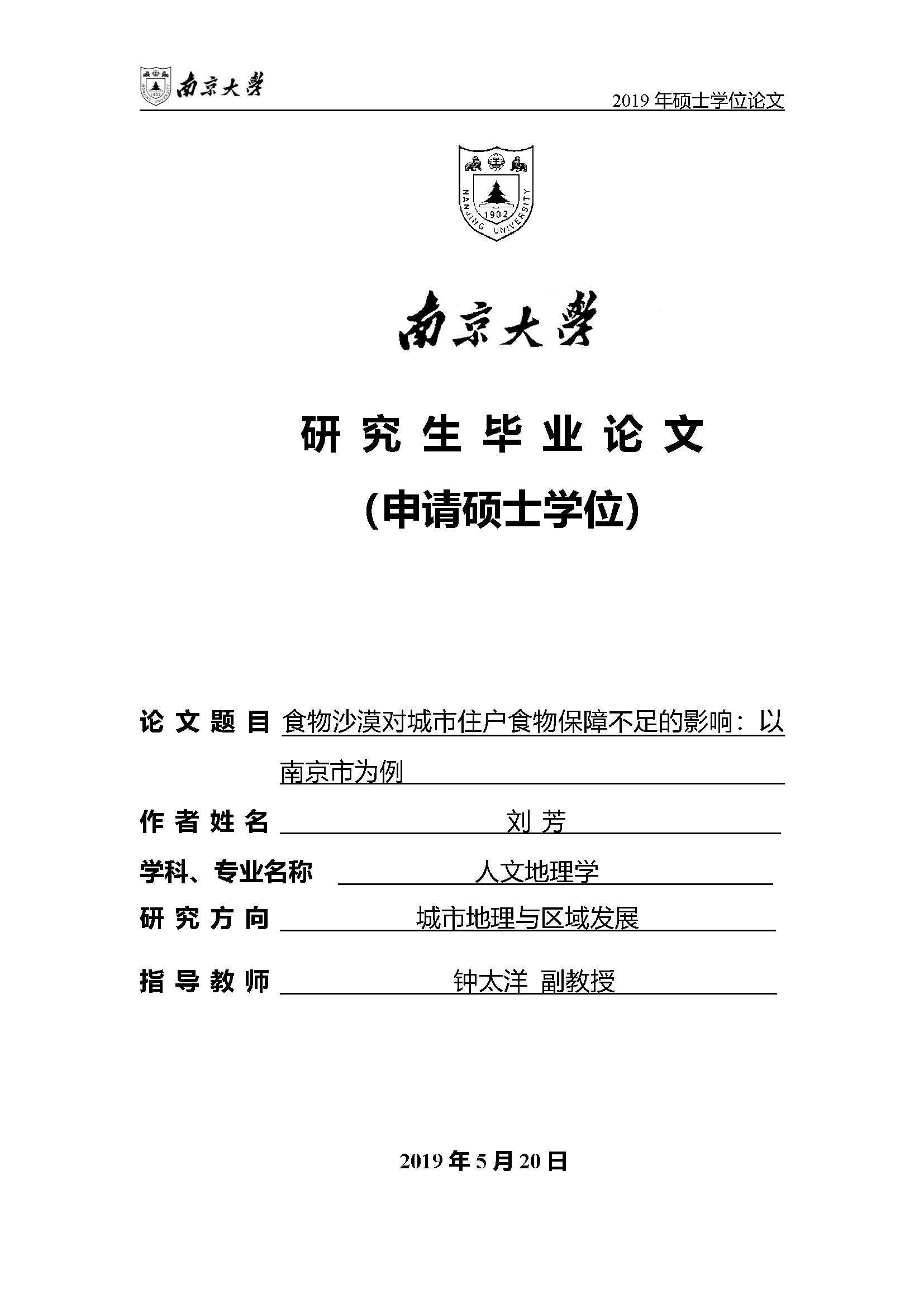– Master Thesis –
Obtaining adequate, nutritious and healthy food is the basis for maintaining human survival and development. Improving residents’ accessibility to healthy food has become an important issue in people’s livelihood, health and household food security, the food system of urban communities is receiving more and more attention from planning managers. Since the food retail outlets are not equally spatially arranged, the geographical location of wet markets and supermarkets, especially the spatial accessibility, is particularly important. The stronger the ability of residents to access healthy food, the less likely they are to fall into the situation of food insecurity. In communities with insufficient population and weak social and economic conditions, due to the lack of food courts or supermarkets in the vicinity of residential areas, residents have access to healthy and reasonably priced retail food sources that are prone to food desert problems. Since the 1970s, developed countries in Europe and America have conducted a lot of research on food deserts, the relationship between food deserts and household food insecurity. In China, scholars have conducted a lot of research on food safety from the perspective of food price, production, reserves, supply and demand balance, import and export, etc., but the relationship between food deserts and household food insecurity has not attracted enough attention from scholars and urban planners.
Different from the previous facility buffer analysis, this study is based on the urban traffic network, using ArcGIS software to analyze the service area of the wet markets and supermarkets in Nanjing, and identify the spatial distribution pattern of food deserts in Nanjing and the food desert characteristics of household samples. To study whether there are social and economic inequalities in the ability of households to access healthy food based on driving, cycling and walking. Since the households mainly complete the daily food purchase activities through the slow-moving mode, our study analyzes the impact of healthy food accessibility, whether in food deserts, individual characteristics, and household socioeconomic conditions on the household food insecurity in Nanjing, in order to provide reference for the improvement of people’s livelihood. The main findings are as follows:
(1) The coverage of wet markets and supermarkets′ service area shows an obvious “core-periphery” mode. The service area coverage of the five districts in Nanjing (Xuanwu, Qinhuai, Gulou, Jianye, Yuhuatai) is obviously better than that of the surrounding districts, such as Pukou, Jiangning, Qixia, Liuhe, Lishui and Gaochun. Among the 1210 urban household samples in Nanjing, there are 95 households in food deserts, accounting for 7.85% of the total sample of the survey. The results of the analysis of the accessibility of healthy food under different travel modes indicate that there are social inequalities in walking and cycling modes, but this phenomenon does not exist in driving mode. In the pedestrian mode, residents who live in relatively weak communities with aging and economic conditions have a higher tendency to choose to walk to the nearest supermarket or wet market to purchase foods. In the cycling mode, when the economic conditions of the household are restricted, they may tend to ride to the nearest wet market to buy healthy food at reasonable price.In the driving mode, household with comparatively superior social and economic conditions are less restricted by the accessibility of healthy food, and have a wider range of options for purchasing food, people may choose to drive to a distant food retail outlet to buy quality, healthy food at reasonable prices.
(2) At the level of household food access, the walking time cost of households to the nearest wet market or supermarket will significantly affect the Household Food Insecure access Access Prevalence (HFIAP). The lower the time cost of obtaining healthy food, the lower the incidence of insufficient food intake in the household. The older the head of the household, the higher level of education, the greater discretionary time and higher awareness of nutrition safety, and the lower level of the household food insecurity. Among the household structure factors, the HFIAP of the nuclear and the extended households are lower than that of male-centered or female-centered households. Household Safety-certified Agricultural Food Consumption (HSAFC) is significantly related to the time spent going to the supermarket, education level, and housing type of the households. The higher accessibility of households to the supermarkets, the higher the education level, the better economic status of the household, and the consumption propensity of safety-certified agricultural food consumption is high. However, whether residents are in food deserts does not have a statistically significant relationship with the level of household food insecurity.
(3) At the level of household dietary diversity, the 24h food consumption recording of households was significantly negatively correlated with the time cost to the supermarkets. The higher accessibility to the supermarkets, the higher dietary diversity level of the households have, and the higher the propensity to consume foods such as beans, dairy products, oils, sugars, and condiments (condiments, tea, coffee, etc.). Among the household factors, women-centered households, nuclear households and extended households have higher consumption possibilities for vegetables, eggs, aquatic products, oils and sugars than male-centered households, and have higher level of dietary diversity. The more household members, the richer variety of foods are consumed, such as potatoes, fruits, eggs, and dairy products. However, the food desert characteristics of households do not have a significant impact on the household’s dietary diversity level.
The innovation of the study is to identify the distribution of food deserts in Nanjing for the first time, and analyze the influence of household’s food desert characteristics on the household food insecurity. The study has important reference value for the study of household food insecurity in other cities or rural areas of China.

